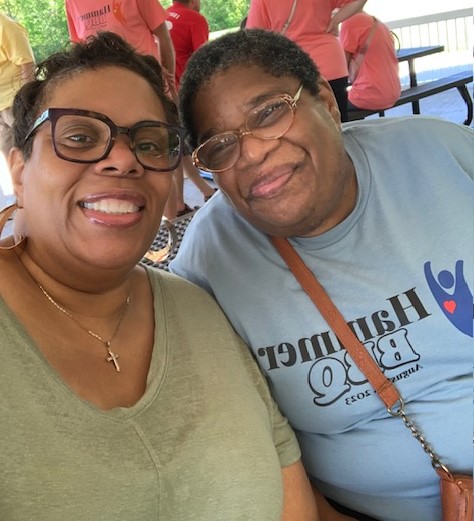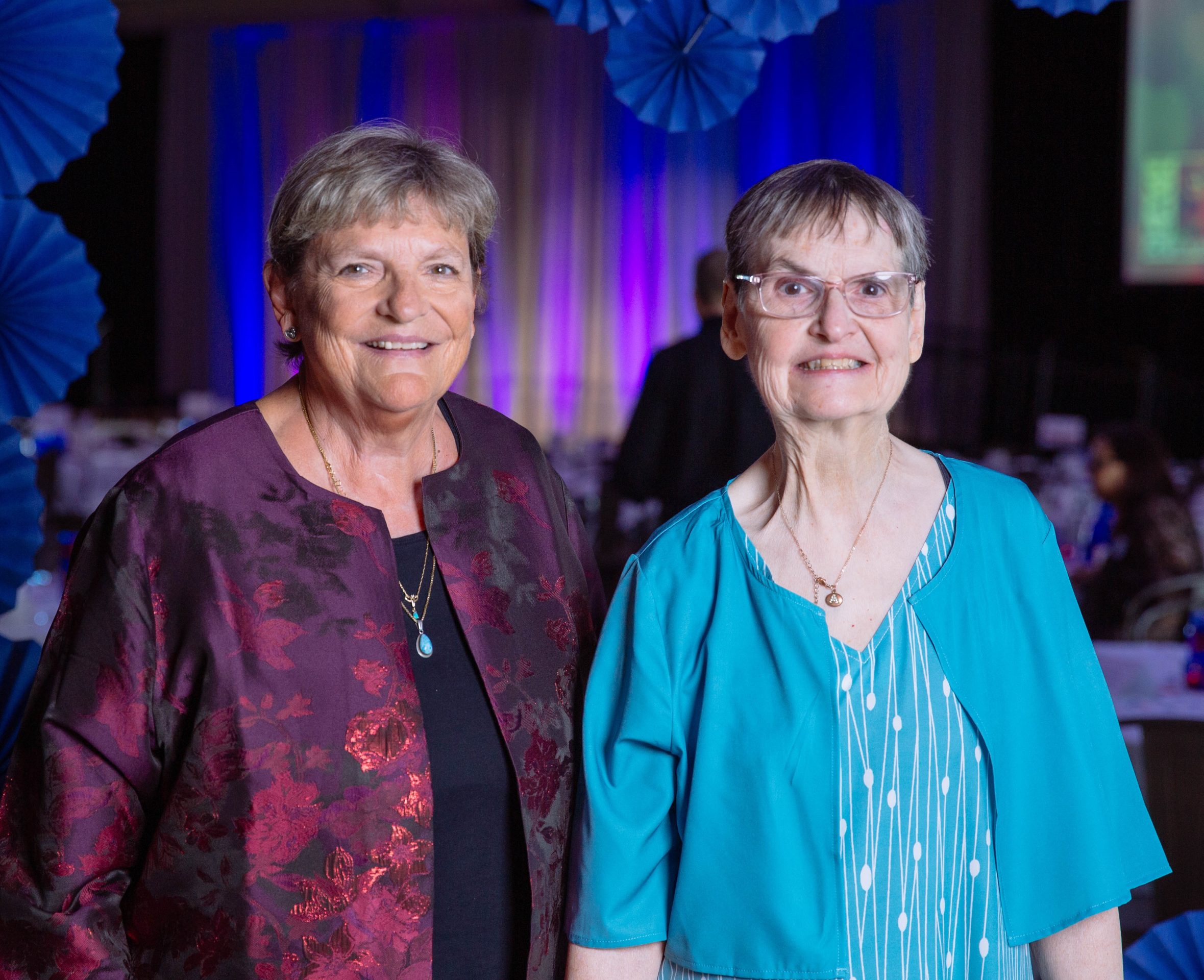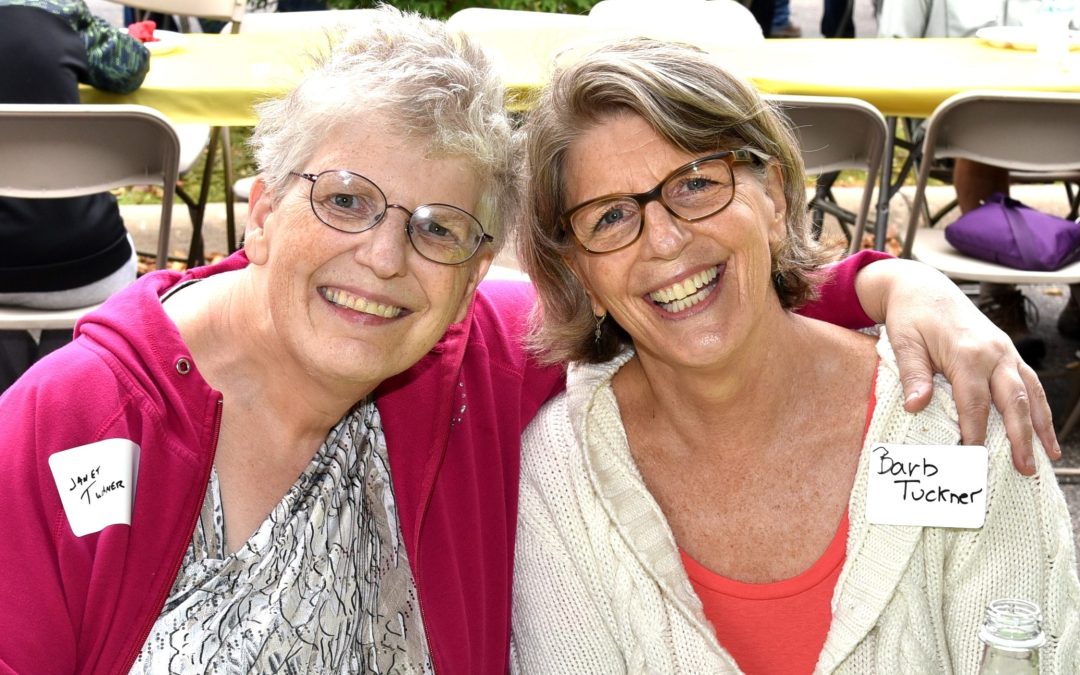
Kelly (right) is close with her sister, Anne
For many of us, sibling relationships are the longest-lasting bonds, surpassing even those with parents, partners, or friends. As a result, siblings often find themselves in the “club-sandwich generation,” balancing support for aging parents, siblings with disabilities, and their own children simultaneously. Despite their unique perspectives, siblings are often overlooked in disability planning and advocacy. Nearly 65% of siblings report being unclear about future plans for their brothers and sisters with intellectual and other disabilities (Griffiths & Unger, 1994). Research indicates that when siblings receive support, they are more likely to remain engaged and active in their sibling’s life.
Support Needs for Siblings—Adulthood
Future Planning and Responsibilities: Siblings need to be involved in discussing and planning for their future responsibilities. This includes being involved in or informed about meetings related to their sibling’s care (medical, support planning, etc.) to better understand their loved one’s routine and needs.

Linda (left) with her sister, Anne, who has been supported at Hammer & NER since 1972
Adult Relationships: People with intellectual disabilities need recognition from their siblings of their need for adult relationships, including support in areas like autonomy and sexuality. Staff can help with these conversations.
Peer Support: Siblings can benefit from connecting with others in similar situations to discuss concerns such as romantic relationships, parenting implications, and managing responsibilities across state lines.
Navigating Systems: Clear information on how to navigate disability services, financial planning, and other relevant topics is crucial. Hammer & NER can help siblings identify helpful resources. The Sibling Leadership Network can be a helpful resource on a variety of topics including future planning and offers a variety of webinars and toolkits. The Arc also has a “Center for Future Planning” resource to support families.
Growing Older
End-of-Life Planning: Siblings will require tools and support for end-of-life issues, including managing grief and the transition of caregiving roles.
Transition of Care: It’s important for siblings to participate in care planning, even if they cannot attend meetings. Their insights should be valued and incorporated into care plans to facilitate smoother transitions.
Support for Siblings at Hammer & NER
We recognize that siblings have a unique relationship with their loved ones with intellectual and other disabilities. This relationship, while different from that of parents, is equally significant. Siblings might face challenges balancing support roles with other responsibilities such as caring for aging parents, partners, and children, as well as managing their careers.
We understand that siblings might not always be ready to engage fully in support planning but know they appreciate being asked and involved. Since they might lack the same knowledge base about disability supports and services as parents, clear explanations and accessible resources are essential. Additionally, siblings may encounter financial, personal, or logistical barriers that impact their ability to assume responsibilities.
Supporting siblings effectively ensures they remain a strong, engaged part of their sibling’s support system throughout their lives. At Hammer & NER, we have many wonderful examples of sibling involvement and engagement. One such story is about the Smith family, whose loved one, Mike, is supported at our McGlinch home. Their story was featured in our 2024 Summer Discoveries. Read it here.
Check out the Minnesota Developmental Disabilities Council for additional information and education resources.
(In the photo above: Barb Tuckner (right) and her sister, Janet, who has been supported at Hammer & NER since 1981.)
This is Part II of a series on Sibling Advocacy. You can read Part I here. Watch for Part III coming soon.


I have observed first hand how meaningful it is for individuals to have sibling involvement. From a card or letter, a phone call or a visit for coffee. The value of family and love shines through. Staff and the individual appreciate ideas on care and future planning that are based on personal family values and beliefs.